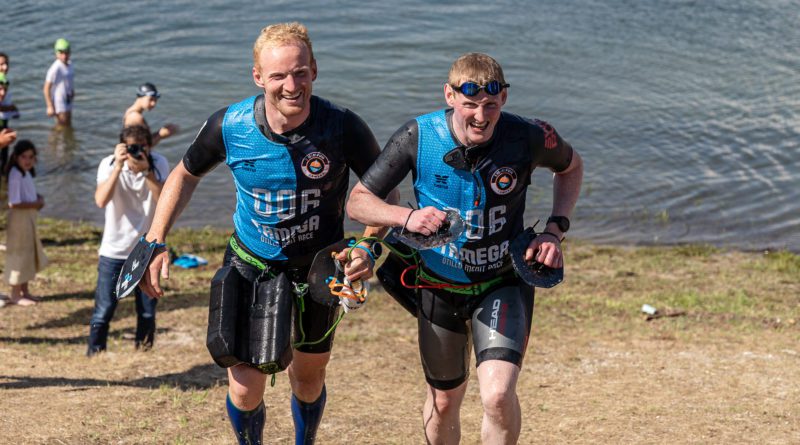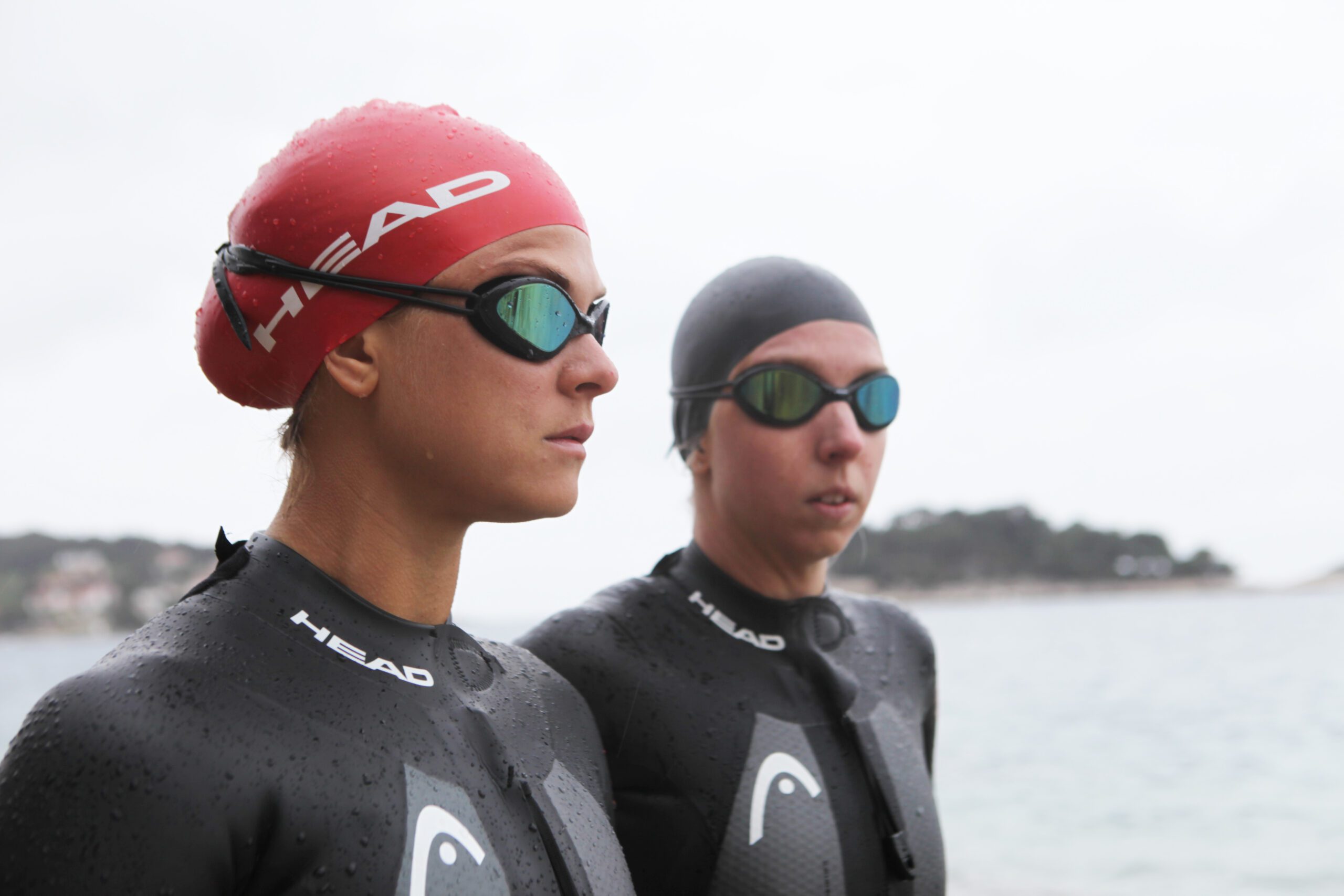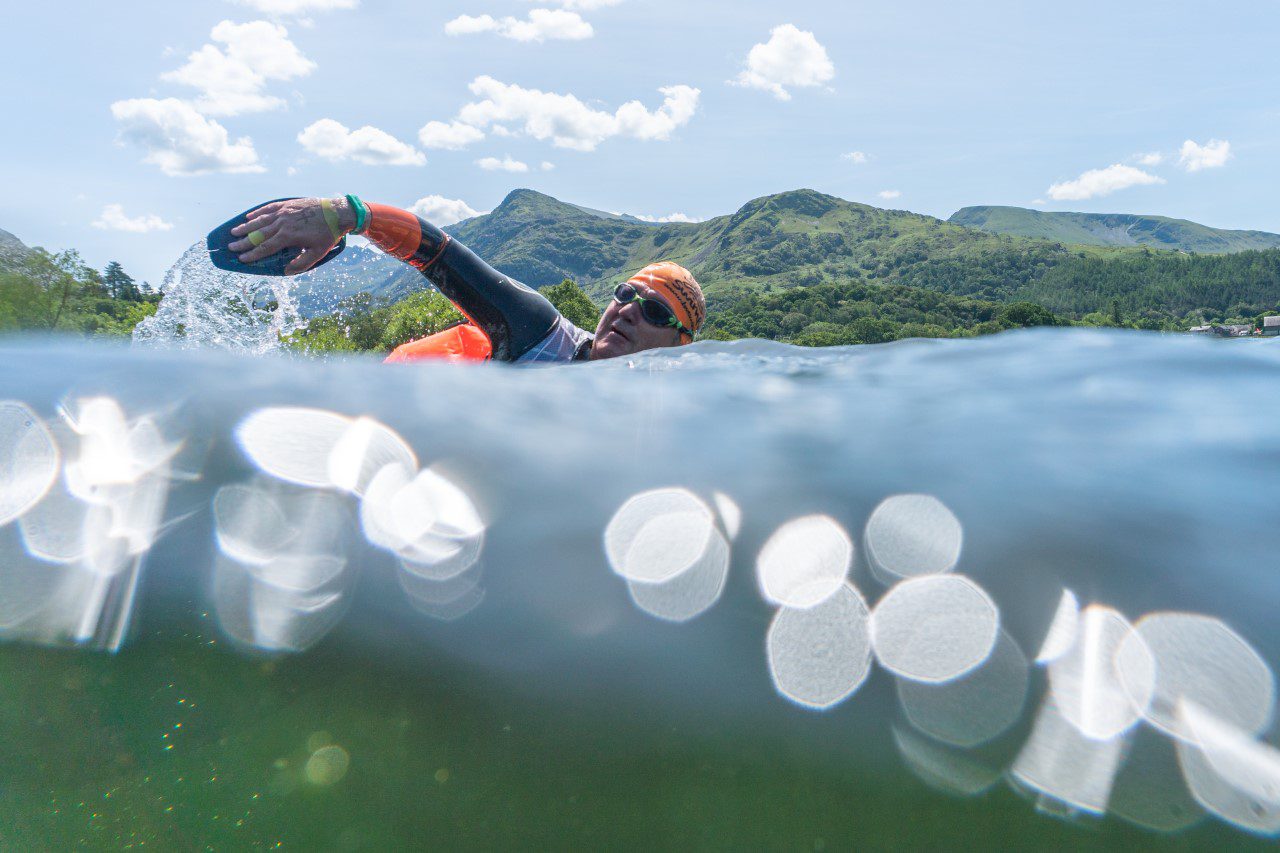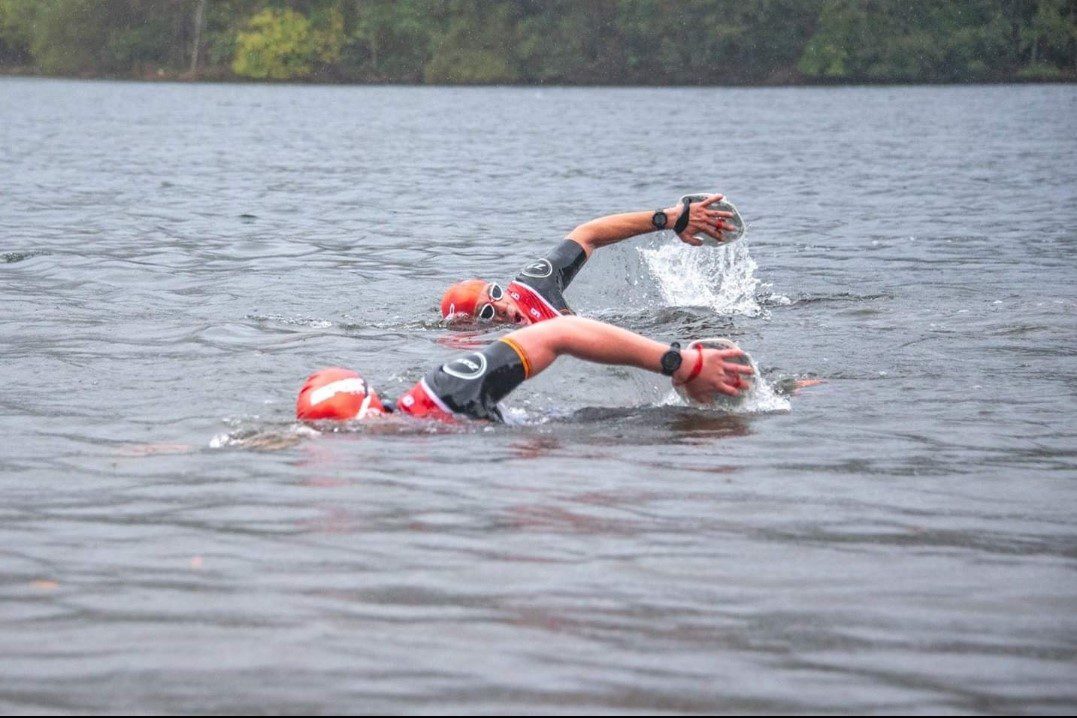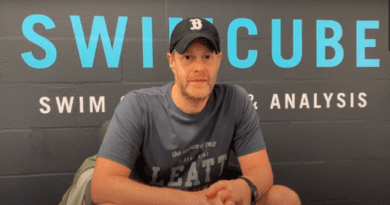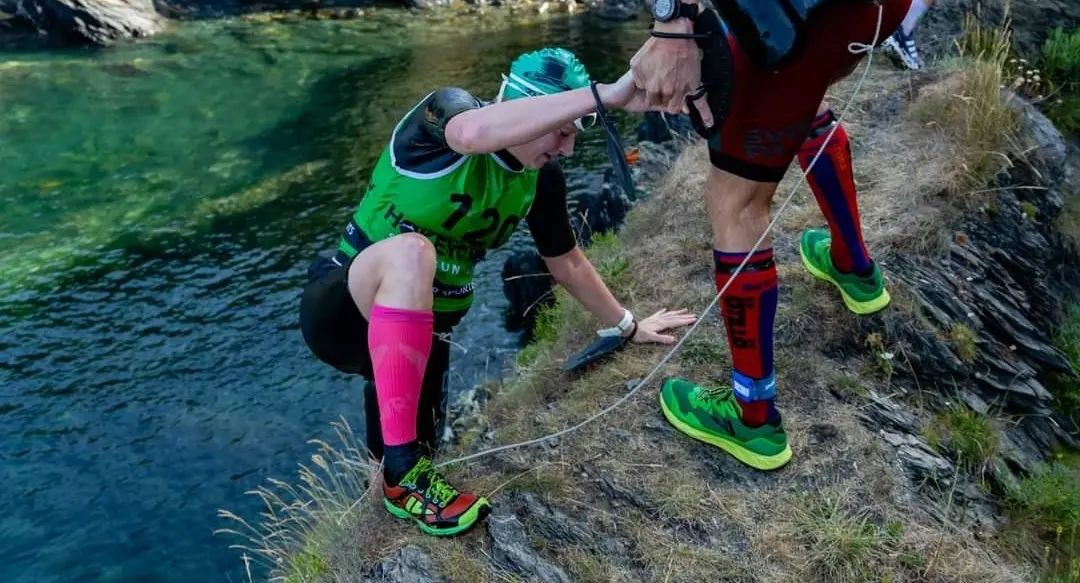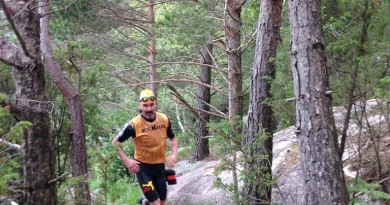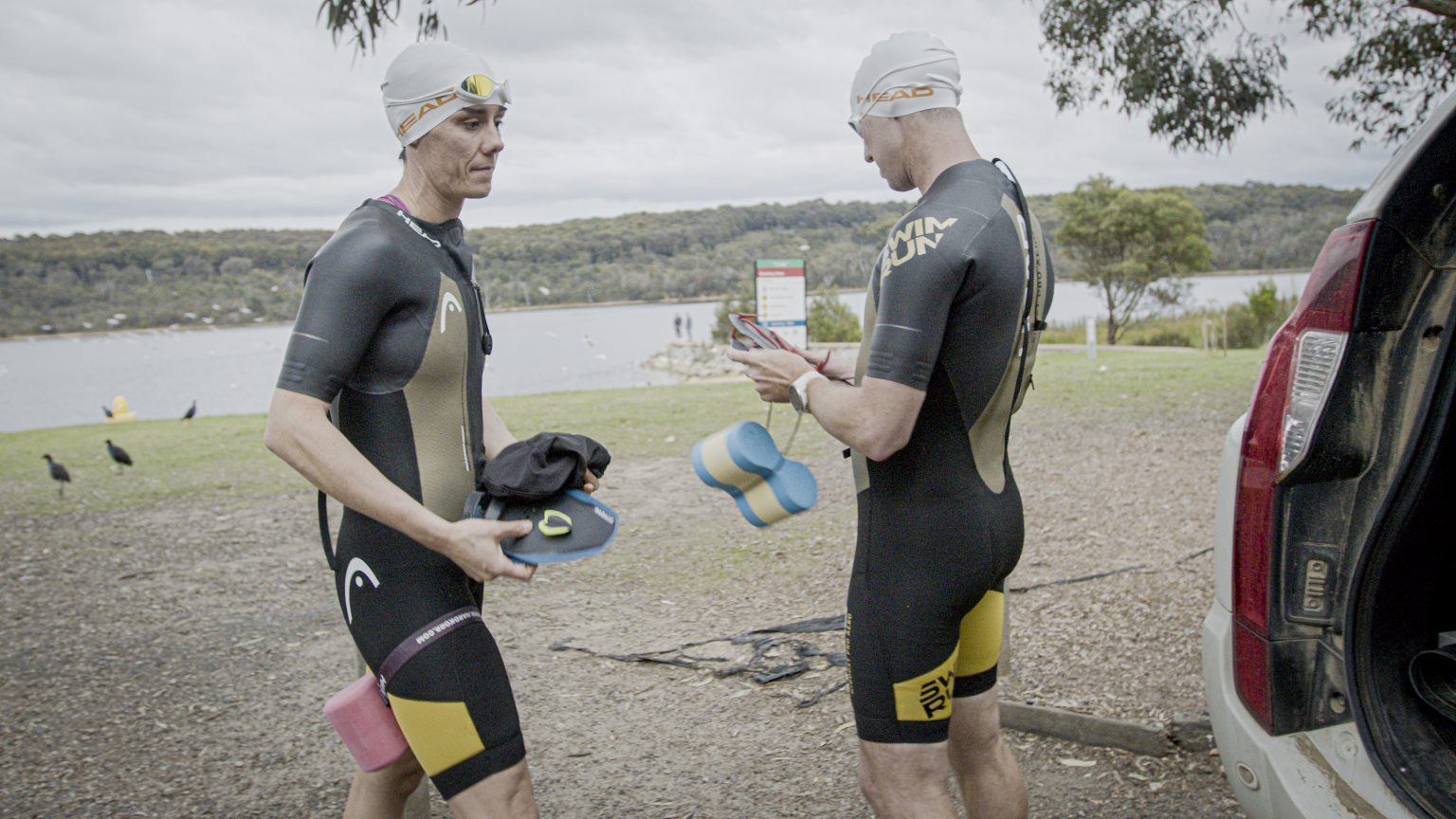Swimrun Team VS Swimrun Solo
Swimrun was founded as a team sport where participants would race in a team of two. Over the years it has evolved, with almost all races now offering an increasingly popular solo option. Swimrun enthusiast Alex Sheen who is a popular figure in the community and part of Team Envol, has been a staunch solo participant, but this year ventured into the unknown to race as a team and shares his experiences.
In his debut year, and like many newcomers to the sport, he was confused by the “team” elements of swimrun and participated purely as an individual. Alex reveals that he was faced with a more general nervousness around competing alongside someone who was stronger and faster than him. His trauma of racing with someone comes from a half marathon when a helpful friend attempted to pace him. Alex blew up in the second half and describes the experience as ‘nothing short of a disaster’. The overwhelming conclusion he came away with was wanting to avoid any scenario in the future where he was not in complete control of the pace he was going at.
Alex’s Experience Transitioning From A Solo To A Pair
Fast forward to 2023 and through a variety of circumstances I found myself booked onto not one, but two races with a partner and was entering the unknown.
First up was Mad Hatter Sports 19km Hokey Cokey St Austell (Cornwall, UK) race where I would be partnered with fellow Team Envol athlete, Tom Jenkinson. Tom and I didn’t actually meet in person until race morning adding a little extra to the experience of racing as a pair….Tom is also highly experienced swimrunner with extensive open water and long distance trail running experience, far in excess of my own!
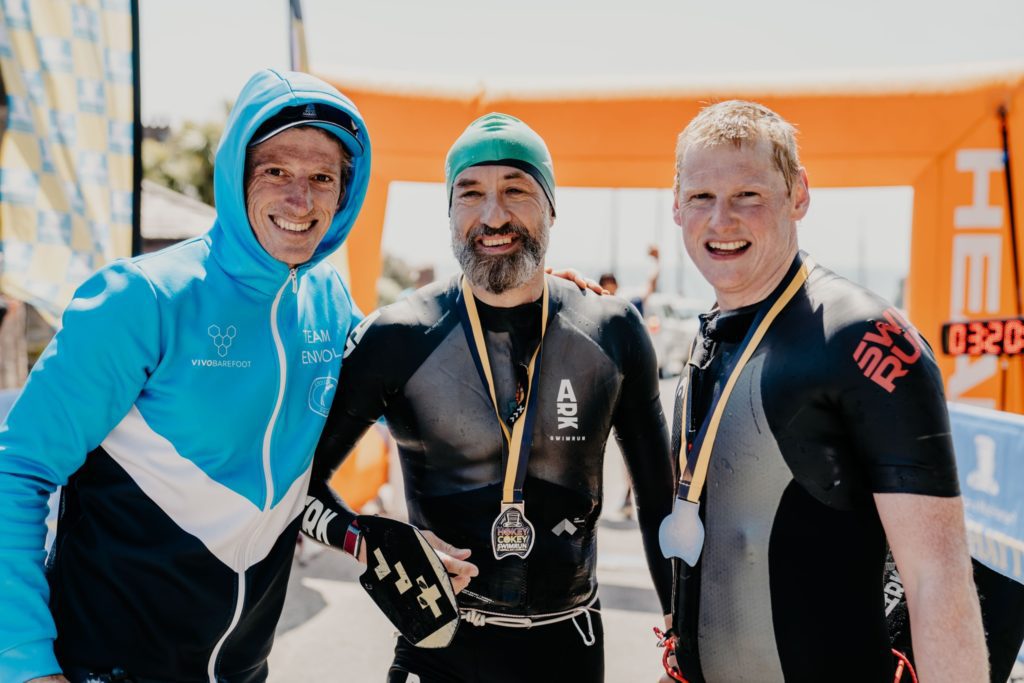
Nico Remires, Tom Jenkinson & Alex Sheen at Mad Hatter Hokey Cokey
My second partnering experience was with swimrun.com’s Fred Newton. This time on the 42km Marathon Ötillö Merit Distance at SwimRun Tamega (Porto, Portugal). Again, an experienced swimrunner and most worrying for me, an accomplished trail runner who runs half marathons at my 5km pace…and we would be tackling a race distance far beyond anything I had done before!
So, with two races in a team under my belt, shortly followed by a long course 39km solo race at As Keen As Mustard’s Nene Park SwimRun festival, here are my reflections on the highs and lows of partnering for swimrun.
Swimrun Pairs: The Good Bits
One of the big benefits of racing as a pair is a second set of eyes and second brain to share the mental workload of an adventure race. Unlike a road running event where not only is the course generally very obvious but there are also plenty of athletes and visibility. Racing as a pair means two pairs of eyes to look for trail markers as well as sighting on the swims. During long swims at both St Austell and Tamega, I paused mid swim to discuss the direction of travel with my team mate before moving on again. In contrast, racing solo at Nene Park there were moments where doubt began to creep in on some of the runs where I hadn’t seen a trail marker for a while and would have liked to get a second opinion on whether I was still on the course!
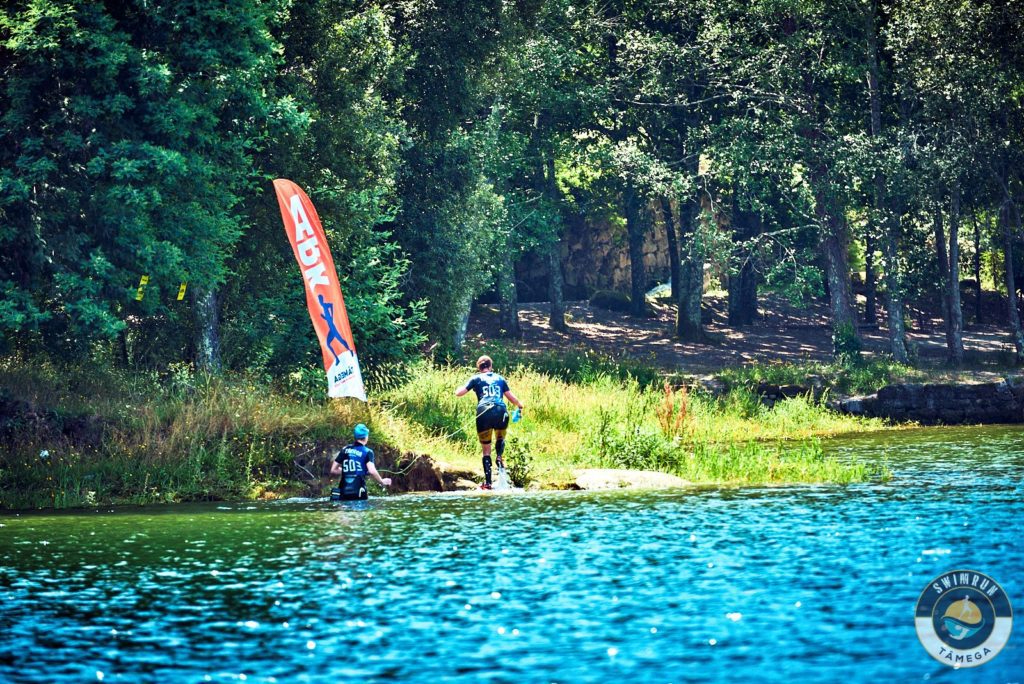
When competing solo, it’s easy to lose track of where you are in the course, and keep on top of your fuelling and hydration. While this was less important on the shorter race I did in Cornwall, Tamega was hot, hilly and took all day. Keeping on top of my fuel and fluids was really important and I was grateful to have Fred, keeping me honest on re-hydrating and refuelling. We agreed a plan in advance for how we’d handle the aid stations and made sure the other was drinking enough, I then further benefited from Fred bringing a flexible flask as we went a long time between some of the aid stations and my cup was of little use! A second person keeping track of where you are in the course also prevents the calamitous error I experienced at Nene Park of cabbing down on a 1km run thinking it was the beginning of the 7km long run.
Something that surprised me in racing as a pair was how our mismatched paces could actually be a strength.
At St Austell, while Tom and I were comparable swimmers (Tom may disagree…), Tom was a more experienced runner and so we made the decision for him to lead the swims so that I was as fresh as possible for the run legs. I was shocked at how easy it was to just cruise along behind him on the longer swims, my only goal being to not get tangled in our tether. Several times I proposed we go a bit faster on the next swim, in hindsight I now realise that while I felt this was possible, I was getting a pretty free ride! Where I really saw the benefits of being in a team was Tamega.
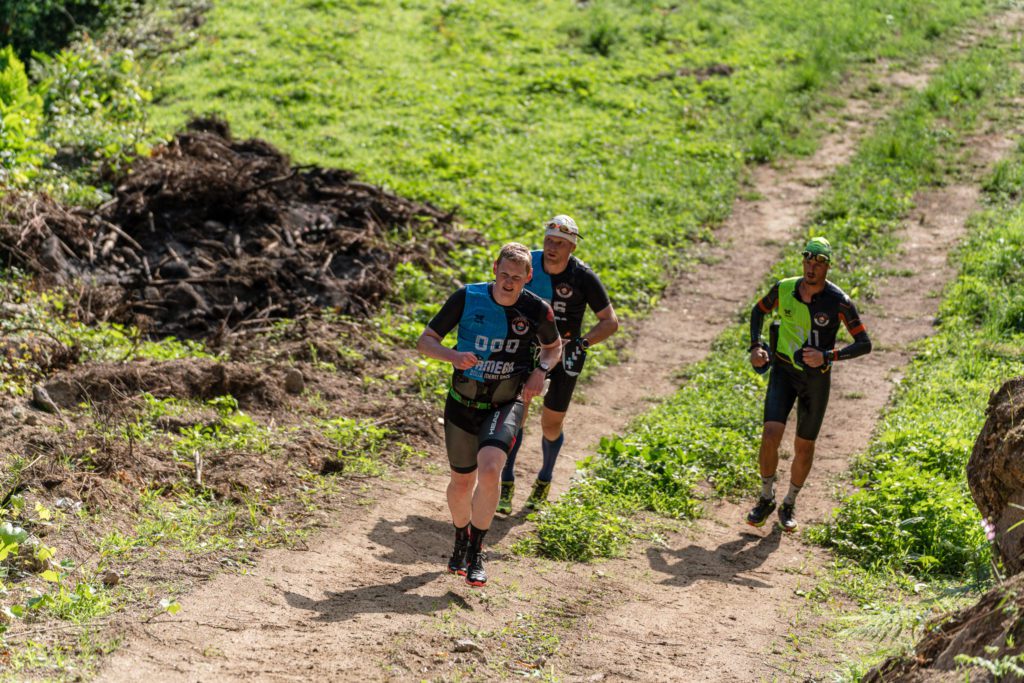
Alex & Fred Newton at Swimrun Tamega
Conversely, I am stronger and more experienced swimmer than Fred so it was natural that I should lead each swim and we were pleasantly surprised to maintain a little off my CSS as Fred benefited from the draft. I certainly cashed in on this support to Fred on the runs. Faced with some brutal inclines (the course covered as much elevation as I tackle in a month) and more running in a single day than I usually do in a week (and indeed had ever done in a day!), the running was always going to be a tough challenge for me. From the start, Fred kept our pace sensible on the flat and had us power walking the hills, even those we might normally consider runnable. As I started to struggle on some of the steeper sections of the first long run, and repeatedly towards the end of the race as I faded, Fred tethered us back up and kept the line taught as he helped me to keep making progress. Just that slight pull from him was enough to just take the edge of my fatigue and help us keep going.
Another benefit of being a pair was company for what can be a very long day out. While there are plenty of speedsters out there, it can still be a day of 5+ hours which not everyone enjoys on their own. During the Tamega race, Fred and I had some deep conversations spanning family, philosophy, faith and all manner of other topics.
While not every team will be moving at a conversational pace, it was a great opportunity to get to know one another and we finished with a stronger friendship and deeper understanding of one another, very aligned to the spirit of swimrun.
I really began to see the value in swimrunnning in a pair as a great way to introduce someone to the sport. It’s an intimidating prospect for newcomers to get started, offering to do it together can be a great way to break down boundaries. I’ve already convinced a work colleague it would be great fun to race at St Austell together next year – the wackiness of doing it together only adding to the level of interest!
The Low Points
Something I hadn’t expected working as a team was how much slower transitions would be. Having largely raced in Super Sprint races last year, where everything is about speed, my transitions (I think!) are really slick and I’m up pull buoy stowed and off and running straight away. Working with a team mate not only brings the added complexity at each transition of tethering or un-tethering, but also highlights any differences in your approach to or exit from a transition. While I wasn’t waiting around, it took a while to get used to doing my own transition and then checking with my partner to see if they were ready and then us moving off. In Cornwall this was further compounded by doing this on a beach with shore-breaking waves which would easily knock you down if you lingered for any length of time. I’m confident that with some practice, many teams work through this, but I didn’t have that opportunity this time.

As Keen As Mustard Events: Nene Park
While there is a huge benefit in having a team mate holding you accountable for hydrating and fuelling, mismatched approaches to aid stations can quickly add time to your race. I’m used to grabbing a quick couple of cups of drink and relying on my own gels for fuelling but both Tom and Fred made more extensive use of the aid stations. As more experienced athletes, they may be onto something, but as someone used to blasting through in the minimum amount of time, I was surprised to find them both stopping to eat food! As teams become more accustomed to working together, I am sure they plan jointly on how to approach aid stations to overcome this.
While Fred was incredibly gracious with me as I faded from about hour 5 of our 7.5 hour race at Tamega, I did feel a sense of guilt at not being able to keep up our pace, or indeed run very much at all. I expect all teams face this challenge of one partner being stronger, either overall or on the day and it comes down to the relationship between the individuals as to how that is handled. Fred was very patient and as I mentioned in the positives section, help drag me up the hills, but I have heard horror stories of teams having huge arguments mid race! Tied to this, is the battle of measuring one another’s fatigue levels. So many factors beyond simple fitness can affect how one performs on the day and it’s not always easy to communicate this, as so often we don’t know how we feel ourselves especially with all of the unknowns of long adventure racing.
The Verdict
So overall, my first experiences of partnering were very positive. I benefited from having a partner on both races and doubtless finished faster than I would have done on my own, despite transition faffing, because of being able to play to one another’s strengths. My fears of being forced to push harder than I wanted to never materialised and both Tom and Fred were happy to find paces that we could make progress at but didn’t result in burning out.
The need to be in complete control melted away as a team spirit developed and I began to rely on my partner as much as they did on me.
The weekend after Tamega, racing solo at the Nene Park 39km race provided many opportunities for reflection. I pushed quite hard in the first couple of hours of this race spotting an opportunity early on to establish myself in a podium position, and I think the confidence I had built over the prior two weekends with more experienced athletes certainly put me in a good position to do this. Having had Fred’s support to get through 42km in Tamega with all the heat and hills, I felt much more prepared to tackle a fast, flat 39km course. I was on course for 6 hours, which some may dread the idea of doing solo, but I am very happy with my own company and can easily remain in my own head for hours so this didn’t concern me at all – of anything I rather enjoyed the solitude it offered.

The heat and hills of Swimrun Tamega
I recognise this isn’t for everyone though. As I cross the 5 hour mark, the point I am learning where my body has generally had enough, I did muse whether a partner would have been good to keep me going, but with a little walking I was able to press on and comfortably retain my position in the field, coming in ahead of all but one of the teams. Overall, I enjoyed racing solo just as much as in a team, but it was a different experience. I perhaps achieved more of a “flow” state racing solo than I did in a team, but did reflect on how much more fun it had been than I expected racing as a pair!
So if you’re wondering about giving teams a go, I would highly encourage it! I am convinced of its power and the different experience it unlocks, even before you factor in being able to achieve more as a pair playing to your strengths than as a solo. For me there are still many unknowns, I am still on the hunt for a long term swimrun partner, I don’t quite know what it’s like to really race as a pair or indeed race multiple events together, but if you want to add an extra dimension to your swimrun, go find someone and tie yourself to them!
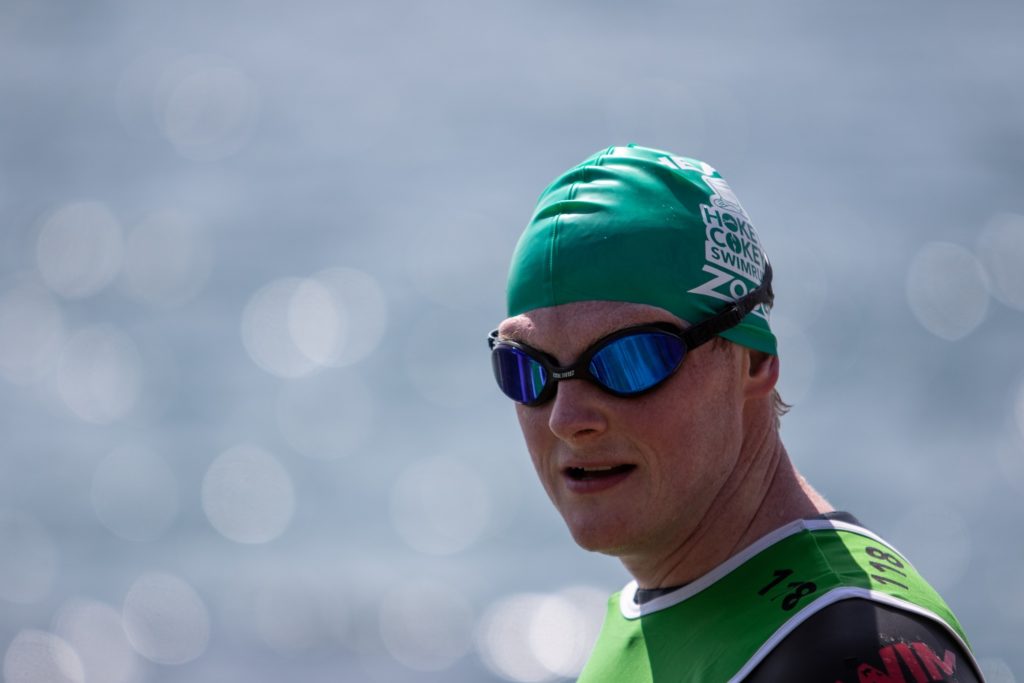
Alex Sheen is on the hunt for a look-term partner. Would you like to get Sheen’ed.

